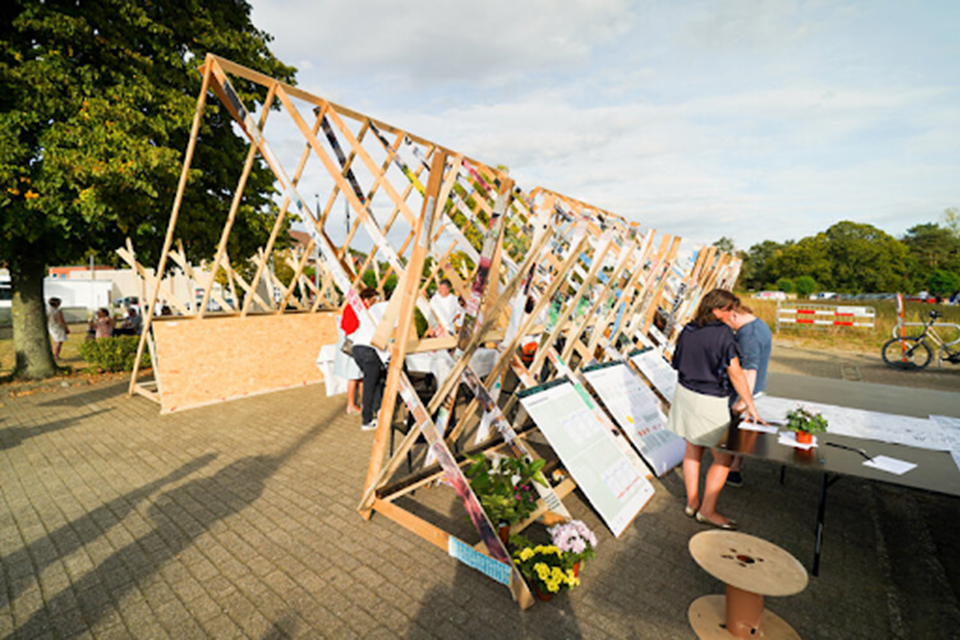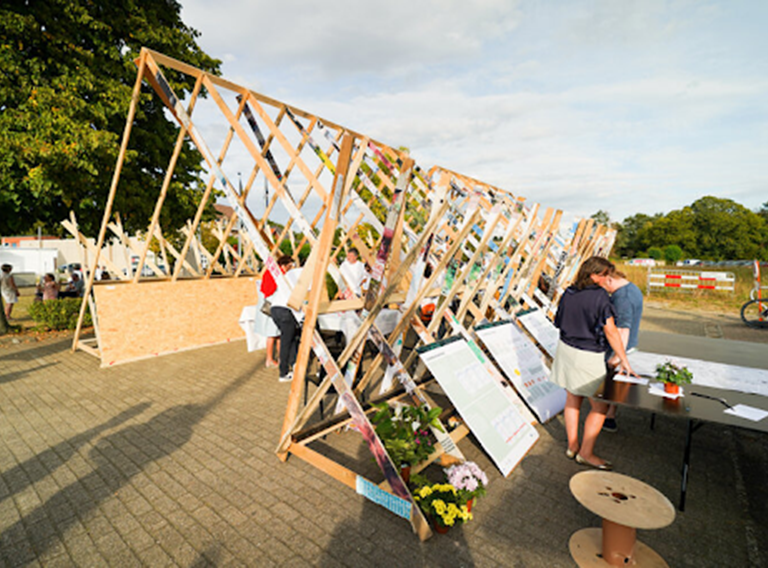Partners in innovation: Studio NZL “Noord-Zuid Limburg”
The project “Noord-Zuid Limburg” (“North-South Limburg”) aims to achieve a sustainable design for the North-South route (connection between Hasselt and Eindhoven) that currently runs straight through the centre of the municipality of Houthalen-Helchteren. In this project, a multi-disciplinary collaboration is set up with different partners.


Partners in innovation: Studio NZL “Noord-Zuid Limburg”
Studio NZL is the consortium of the project partners Arcadis and Tractebel (engineering firms), Maat-ontwerpers en 51N4E (design firms), LDR (legal support), research office TML and our research group ArcK (Hasselt University) and is responsible for the research and design of the new trajectory.
The North-South trajectory has a long history (over 40 years of design and discussion), but it never came to a structural solution. Attention for dialogue, participation and the local context are thus of utmost importance in this project. This is where the role of our researchers comes in. They shape the participatory process by using a bottom-up design approach, working with and for people who live and work in the context.
Our researchers have developed a mobile North-South Road Workplace to “work” together with users on the future of the North-South connection. This mobile workspace is mounted on a tandem that symbolizes “working together” and the participative part of this study. The researchers travel with the tandem along and in the vicinity of the North-South connection. They stop at interesting places (houses, companies, green places, public organizations such as schools and cultural centers) and take people on the road to collect stories about the connection and the surrounding environment (over 500 interviews were conducted). These formed the basis for a network of committed citizens, motivated local civil society organizations, private organisations and policy makers.
The fieldwork evolved throughout the process. In the beginning, an open, broad exploration, in which the relationship between a person - sometimes from a company or organization - with the North-South connection is assessed; so as to move to more focused stories depending on the needs of the design research. Proposals from the design team are also checked against different stakeholder groups. This in turn feeds the field work. Our research group supports this assessment in terms of content, methodology, communication and logistics, by organizing various meeting moments such as NZL workshops, co-creation weeks, workshops and events. A nice example is our yearly ‘Live Project’.
During three years our research group of Spatial Capacity Building committed itself to contribute to a sustainable mobility transition through a number of design interventions on and around the North-South route via the Live Project. The Live Project takes place every first two weeks of the academic year (latest two weeks of September) and is applied as a strategy to gain local support for difficult themes. Students, teachers and local stakeholders examine a spatial issue at location to achieve - in consultation with the local community and other stakeholders - solutions. This results in real spatial interventions at actual size. The Live Project ends with a celebration and a presentation of the intervention.
Stephan Van Den Langenbergh (Studio NZL - Tractebel) and Liesbeth Huybrechts (Studio NZL - UHasselt) talk about the project (in an interview for UHasselt Magazine, June 2019) and how it differs from attempts of the past. “We start with a blank sheet, we look way beyond mobility and involve all stakeholders in each step of the process”, they argue.
Stephan Van Den Langenbergh: “In the past, the North-South connection was often approached as a car - infrastructure project. With this procedure, we look much wider and also include other mobility themes such as a reliable regional transportation system, innovative mobility, a high-quality bicycle network among others. Also, we include living and working, landscape and recreation. We really look at the overall picture.”
Liesbeth Huybrechts: “Our approach is also completely different. It is no coincidence that our baseline is “Together we get further”. In the past, the researchers and clients sat at the drawing board, and the stakeholders could respond afterwards. We are now bringing all persons involved together at the table from the outset to develop a supported and sustainable solution together.”
Stephan Van Den Langenbergh: “Indeed! We put a lot of effort into a broad participation, and this from the beginning of the project. At each step, we invite all stakeholders - city councils, social partners, companies, citizens, action groups and environmental associations - to think about alternatives.”
Liesbeth Huybrechts: “Each month we organise work sessions with about forty participants from all stakeholder groups. We also put a lot of effort into the individual stories and wishes of local residents, passers-by and other stakeholders, to give them a place. Our researchers literally travel on a tandem along the North-South connection to talk to people, to collect stories about the connection and the environment. We explore how our interlocutors live along the North-South connection, how their lives evolve, what they dream about. We find this approach important as well, and this also provides input for the designs.
Stephan Van Den Langenbergh: “And we also have the co-creation weeks.”
Liesbeth Huybrechts: “In a co-creation week, the entire team is prominently present at a single location during one week. This makes it visible and tangible that a lot of work is conducted on the North-South connection. It is also a good way to involve the local community and to shape real engagement."
Stephan Van Den Langenbergh: “We try to connect all the different angles then, to put the puzzle together. Everyone who participates in the co-creation week is actually co-author of our ambition note.”
Original and full interview in Dutch: UHasselt Magazine, June 2019
Research domain: Spatial Capacity Building
Contact person: Prof. dr. Liesbeth Huybrechts, Lieve Weytjens

